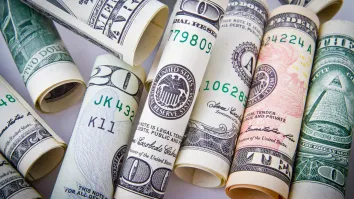
Rising fear over Asian financial crisis is premature: DBS
Should investors be alarmed?
According to DBS, since May, the market was struggling with a rebound in bond yields in anticipation of a possible QE tapering as early as September. The lack luster 2Q earnings season that saw a cut in earnings forecasts, and the recent sell-down in emerging Asia equity markets of Indonesia, Thailand and India added to an already uncertain environment.
However, DBS Research says it’s premature to call this an Asian crisis. The situation is different today from back then during the 1990 cycle.
Here's more:
Asian Financial Crisis fear rekindled…
The reversal in fund flows out of Asia and emerging markets back to developed economies, triggered by the anticipation of QE tapering, rising US 10-year treasury yields and a rebound in the USD, Euro and GBP had exposed the structural vulnerabilities of emerging market economies with high current account deficits.
Indonesia’s current account deficit close to 1996’s level. The Indonesian market suffered the worst fate as investors fled from the country’s latest 2Q13 current account deficit figure that read 4.4% of GDP (quarterly annualized).
This figure is similar to that seen back in 1996, not long before the 1997 Asian Financial Crisis. Indonesia’s 10-yr yields spiked to 8.5%, the Rupiah sold off to 11,000 against the USD and the Jakarta Composite Index tumbled as much as 11% in 3 trading sessions.
India spooked the markets. The India market was also sold off as investors ran scarce from the country’s current account deficit that ballooned to a record high, in excess of 5% of GDP in the FY that ended March.
The Thailand stock index was sold down after the country slipped into a technical recession in 2Q and the central bank cut its 2013 GDP growth forecast to 4.2% from 5.1%.
While Singapore has a current account surplus, equities were nevertheless rocked by the regional sell down that affected all ASEAN countries.
In the past 4 years since the launch of QE in March 09, the emerging economies of Thailand, Indonesia and Philippines have attracted US$24.5bil inflows before the May sell-off.
Outflows since May 22 (beginning of “tapering” sell-off) was US$6.2bil. Volatility will continue should past QE liquidity continues to unwind. Singapore equities are holding out better than regional emerging markets as the country is one of the 11 ‘AAA’ rated countries.
But stocks here will be dragged down if the current rout in India and Indonesia spread to the rest of the ASEAN equity markets.
Premature to call it an Asian Financial Crisis (AFC). DBS Research says it’s premature to call this an Asian crisis. The situation is different today from back then during the 1990 cycle.
AFC started with the collapse of Baht, now it’s the Rupee. Back in 1997 the AFC started after Thailand failed to defend its pegged exchange rate. This time, the suspect is the Indian rupee which has weakened 17% against the dollar since May.
The ‘twin’ deficits (government and external) have been festering for years, the economy needs to be opened up to more competition and the political leaders can’t seem to deliver. But elsewhere, the macro team hardly sees any crisis. The stress in India should be viewed as a country-specific problem, and not as a region-wide trend.
Fed shocked the market with rate hike in 1994. In the runup to the AFC, the FED also shocked with a rate hike cycle in 1994, Japan sought help to stop the yen’s appreciation in 1995 and the US returned to a strong USD policy that same year. Right now, the FED is not hiking rates but tapering asset purchases.
Interest rates expected to remain low, flows will eventually return to Asia where the growth is. Beyond the cyclical outflow out of Asia from the wind down in QE that resulted in short-term volatility, DBS Research expects interest rates to stay low till 2015 in the US, Europe and Japan.
The bigger and longer lasting reason behind capital inflows into Asia in recent times has always been structural. Asia is where growth in the world is taking place and the destination for a lot of capital inflow for a long time to come.












